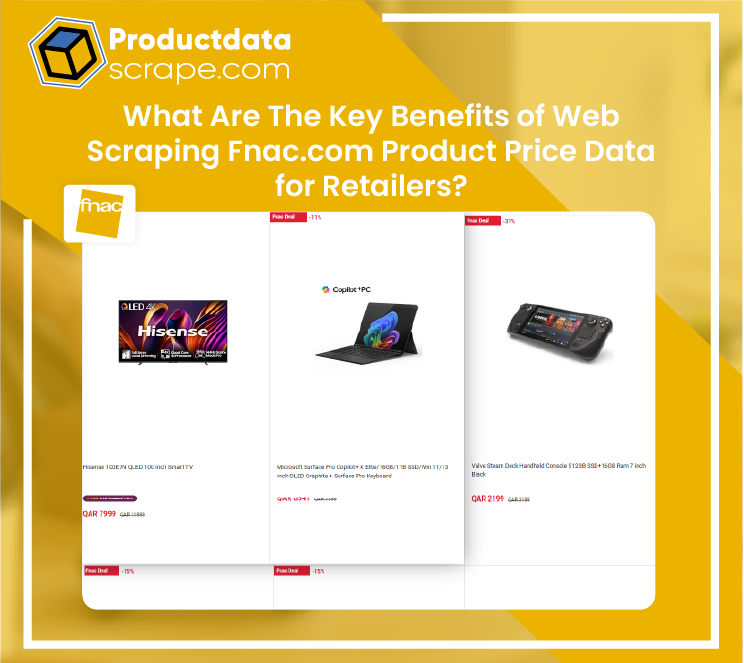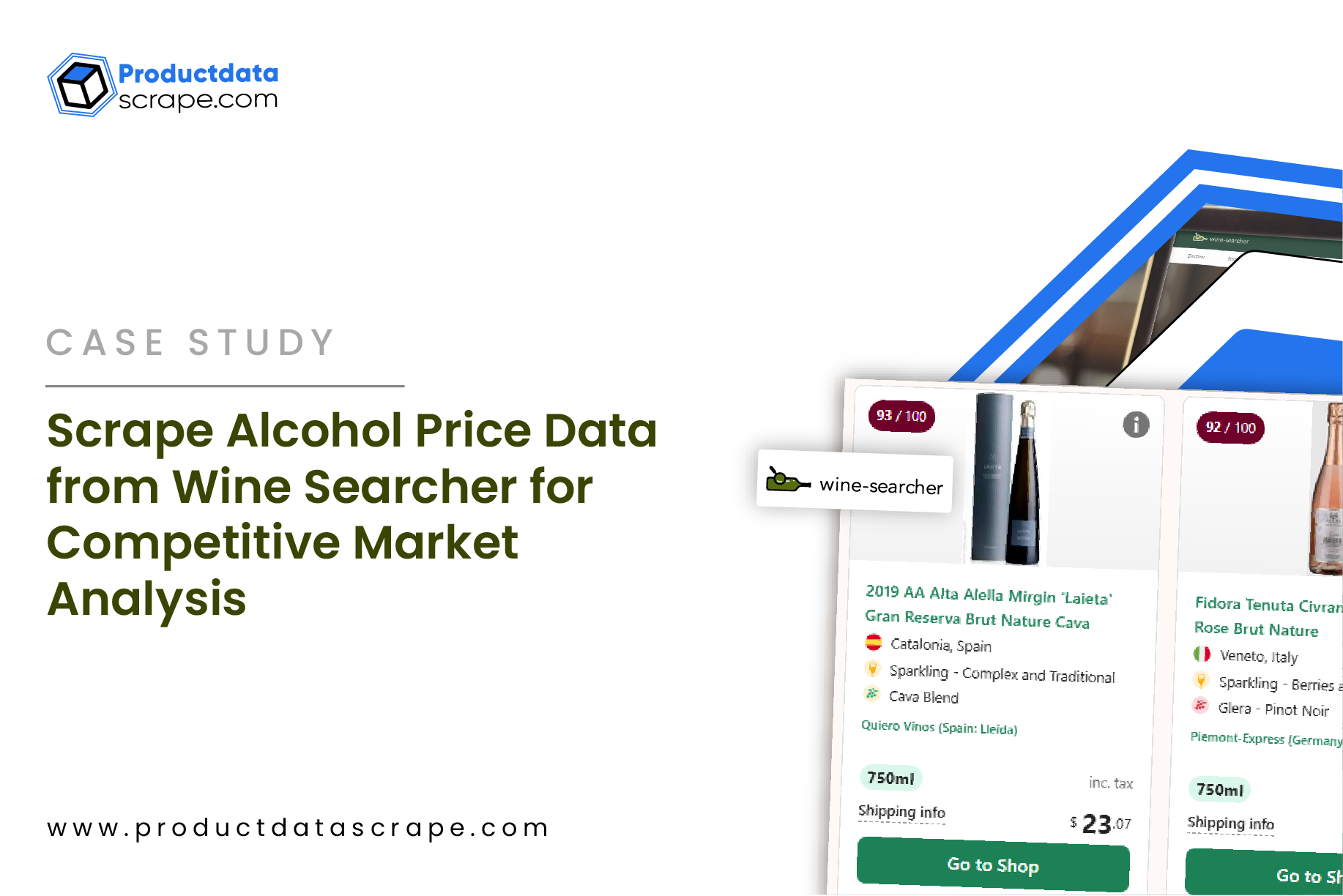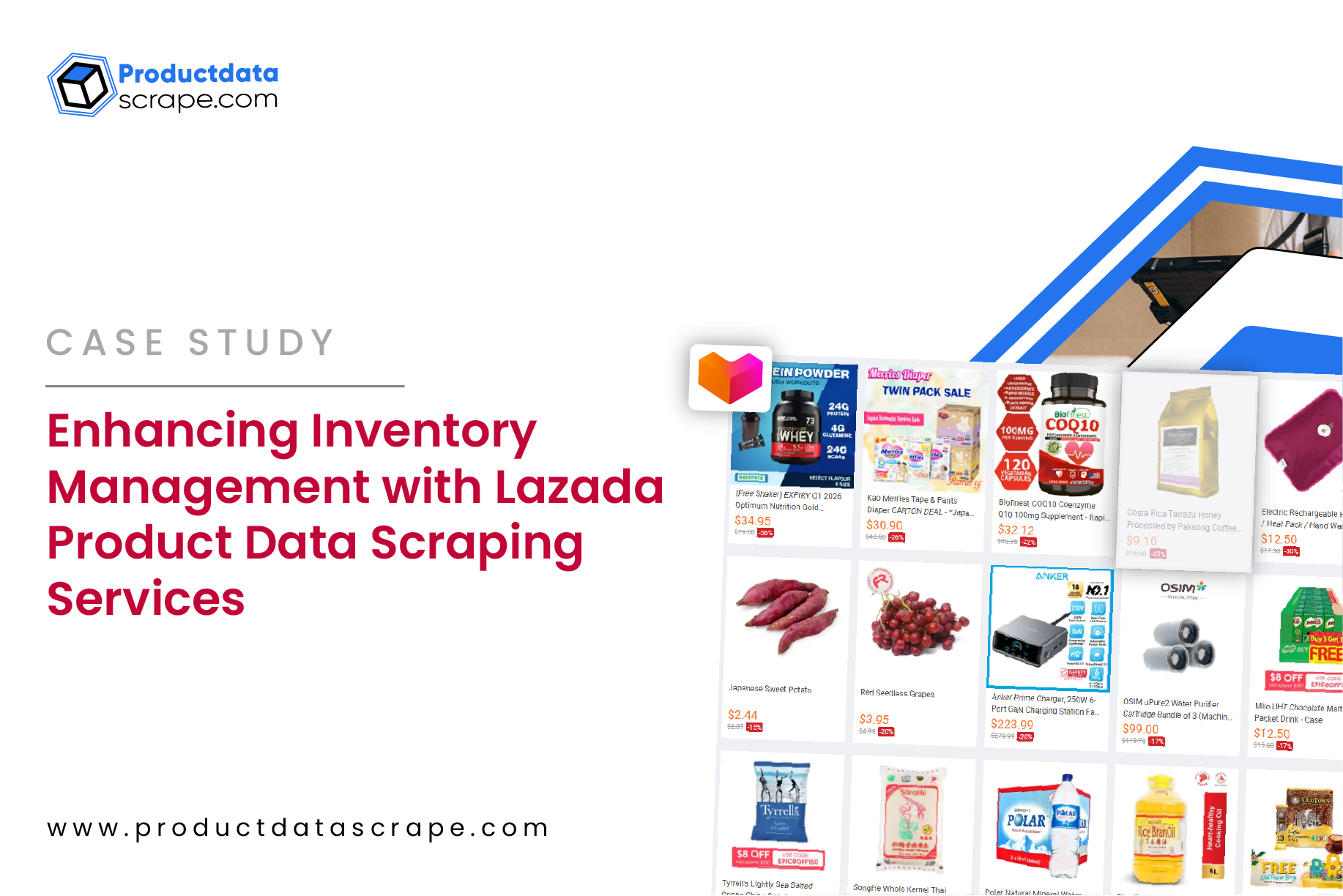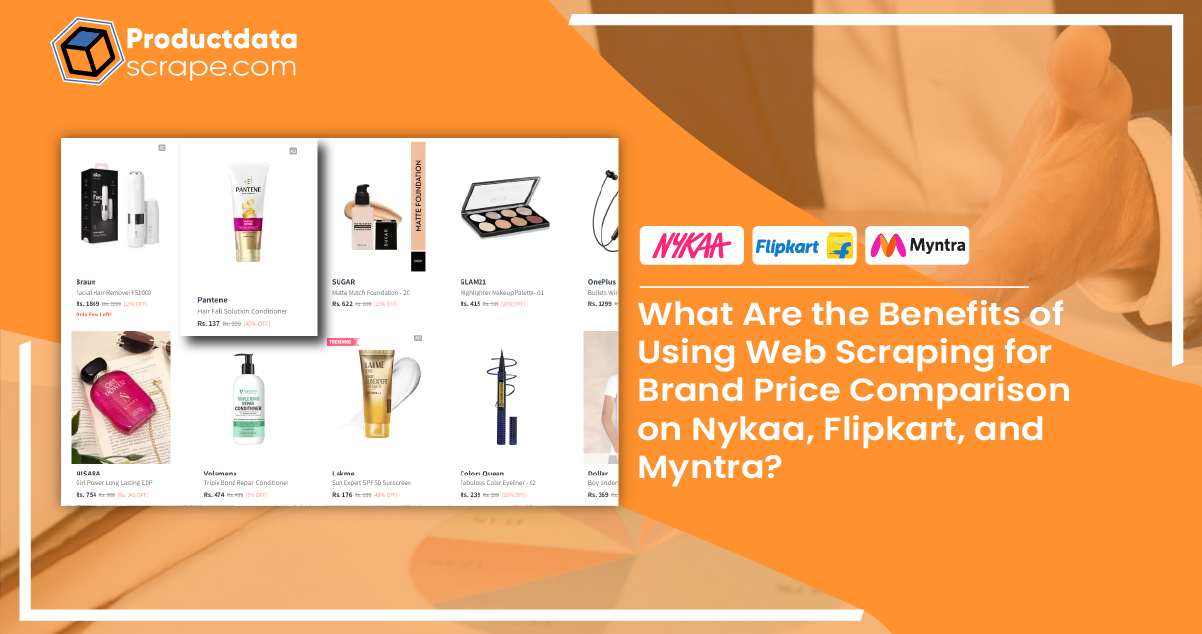
In the competitive e-commerce landscape, pricing strategy is crucial for businesses aiming
to capture market share and maximize profitability. With the rise of numerous online
platforms such as Nykaa, Flipkart, and Myntra, understanding how pricing fluctuates across
different categories and brands is essential for retailers and consumers. Web scraping for
brand price comparison has emerged as a powerful tool for collecting and analyzing vast
amounts of data from these platforms, enabling businesses to make informed pricing
decisions based on real-time market insights. Additionally, e-commerce category price
scraping allows brands to examine pricing trends within specific segments, enhancing their
ability to strategize effectively. This article explores the significance of web scraping for
pricing analysis, the various categories and discounts on e-commerce platforms, and how
brands can leverage this data to optimize their pricing strategies.
The Importance of Pricing Analysis in E-Commerce
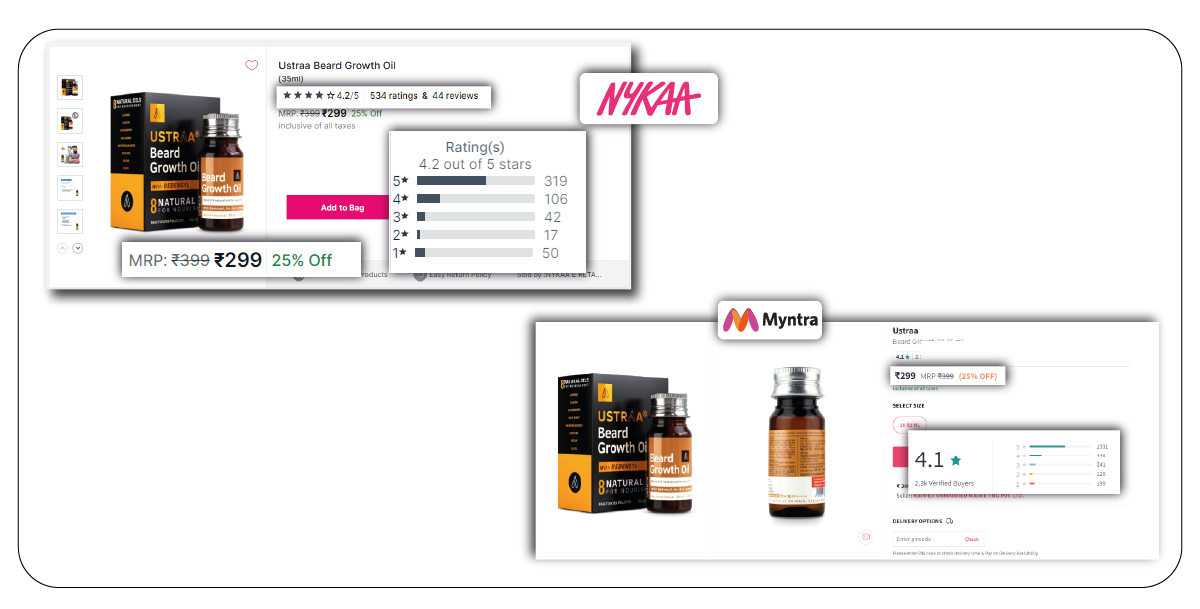
Pricing analysis is a systematic approach to understanding how products are priced within a
market. It involves evaluating various factors, including competitors' pricing, product
demand, consumer behavior, and market trends. Effective pricing strategies can significantly
influence sales volume, profit margins, and business success. Pricing analysis becomes even
more critical in e-commerce, where competition is fierce. Here are some key reasons why
pricing analysis is essential:
1. Competitive Advantage: With numerous players in the e-commerce space,
understanding competitors' pricing strategies is vital. Businesses that analyze pricing
data can adjust their strategies to stay competitive and attract price-sensitive
customers.
2. Consumer Behavior Insights: Pricing can influence consumer purchasing decisions.
By analyzing pricing data, brands can identify which price points lead to higher sales
and customer engagement.
3. Dynamic Pricing Strategies: The e-commerce landscape continuously evolves, with
prices often fluctuating based on demand, seasonality, and market conditions. E-
commerce web scraping for pricing analysis helps brands develop dynamic pricing
strategies that respond to these changes.
4. Inventory Management: Effective pricing analysis using discount and price
collection services can also support inventory management. Brands can determine
which products are underperforming due to pricing issues and adjust accordingly to
optimize inventory turnover.
5. Maximizing Profit Margins: Understanding pricing trends across categories and
brands allows businesses to set prices that maximize profit margins while remaining
competitive. Additionally, extracting discounts and offers data enables brands to
understand promotional strategies better. Furthermore, it can enhance their pricing
plans effectively.
Web Scraping: A Key Tool for Pricing Analysis
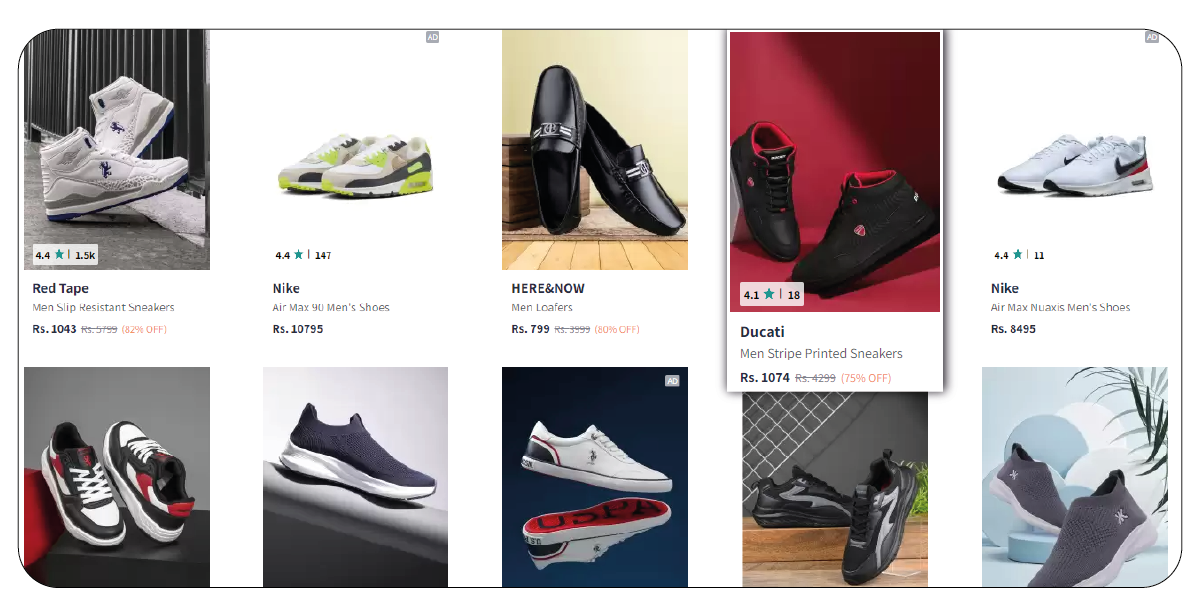
Web scraping is the automated technique used to extract data from websites. In the realm
of e-commerce pricing analysis, it allows businesses to gather extensive data on product
prices, discounts, and other pertinent information from various online platforms. By
employing web scraping techniques, brands can develop a thorough understanding of
pricing dynamics across multiple categories and brands. This data-driven approach
empowers businesses to refine their pricing strategy, ensuring they remain competitive in a fast-paced market. Additionally, utilizing price monitoring services can enhance the
effectiveness of this analysis by providing real-time insights into price fluctuations and
competitor pricing. Furthermore, scraping discount data from e-commerce sites enables
brands to identify trends and promotional strategies, ultimately facilitating informed
decision-making for optimizing pricing tactics and improving profit margins. By leveraging
these insights, brands can effectively navigate the complexities of the e-commerce
landscape and maximize their market positioning.
Advantages of Web Scraping for Pricing Analysis
Web scraping offers numerous advantages for pricing analysis in e-commerce. It enables
businesses to gather real-time data on competitor pricing, discounts, and market trends.
This automated approach enhances decision-making, optimizes pricing strategies, and
boosts profitability and competitiveness in a dynamic market.
1. Real-Time Data Collection: One of the significant benefits of web scraping is its
ability to collect real-time data. In the fast-paced e-commerce environment, prices
can change rapidly. Web scraping lets businesses stay updated on the latest pricing
information, enabling timely decisions.
2. Comprehensive Market Insights: Web scraping can gather data from various e-
commerce platforms, providing a holistic view of pricing trends across competitors.
This comprehensive analysis helps businesses benchmark their pricing strategies
against industry standards.
3. Automation and Efficiency: Collecting pricing data from multiple websites can be
labor-intensive and prone to errors. Web scraping automates the data collection,
allowing brands to focus on analysis rather than data entry.
4. Scalability: As businesses expand, so do their pricing analysis needs. Web scraping
solutions can scale to handle large volumes of data, ensuring that brands can
continue to collect insights as they grow.
5. Customization: Web scraping tools can be tailored to focus on specific categories,
brands, or product attributes, allowing businesses to extract precisely the data they
need for practical analysis.
Categories and Discounts: Insights from E-Commerce Platforms
To illustrate the power of web scraping in pricing analysis, let's examine how this approach
can be applied to prominent e-commerce platforms like Nykaa, Flipkart, and Myntra. Each
platform has unique categories and discount structures that can be analyzed through web
scraping.
1. Nykaa: Beauty and Wellness Pricing Analysis

Nykaa is a leading online platform for beauty and wellness products in India. The platform
offers various categories, including skincare, makeup, haircare, and personal care.
- Category Analysis: Web scraping can reveal pricing trends across different beauty
categories. For instance, data can be collected to analyze the average price of
skincare products versus makeup items, helping brands understand which categories
command higher prices and consumer interest. Brands can scrape Nykaa product
data to gather relevant insights.
- Discount Patterns: Nykaa frequently runs sales and promotional campaigns,
especially during festive seasons. Web scraping can track the timing and magnitude
of these discounts, enabling brands to strategize their pricing during peak shopping
periods. By leveraging a NYKAA product and review dataset, businesses can better
understand consumer behavior and preferences during these events.
- Brand Comparisons: Nykaa hosts many brands, from luxury to affordable options.
Scraping data about brand pricing can help identify price gaps and opportunities for
positioning products more effectively within the market.
2. Flipkart: Electronics and Appliances Pricing Trends
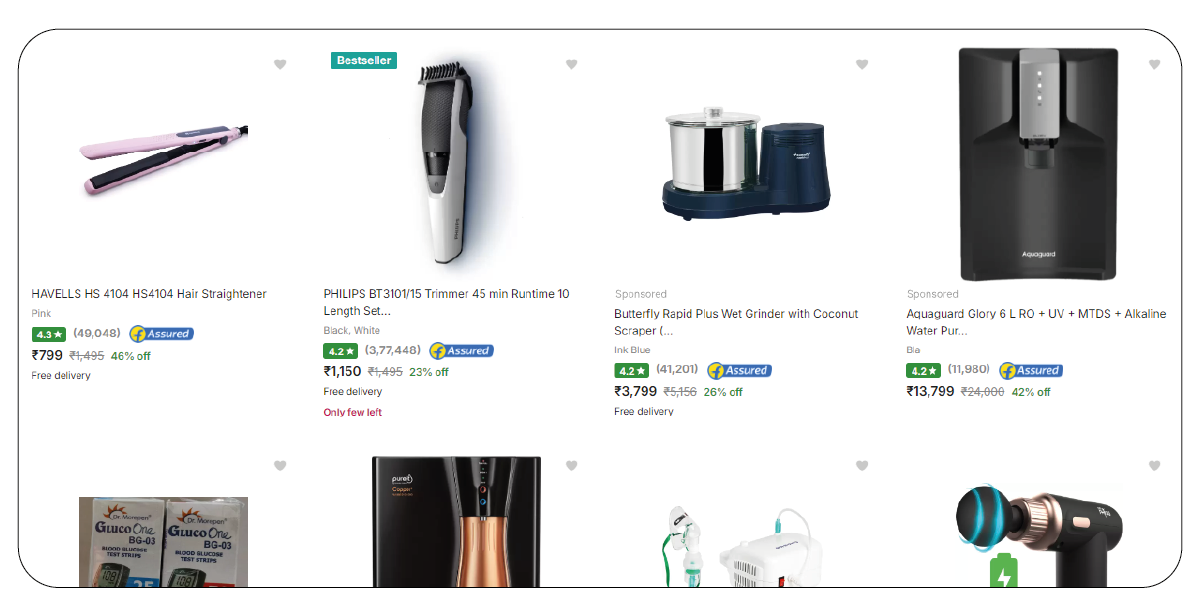
Flipkart is one of India's largest e-commerce platforms, known for its extensive range of
electronics and appliances.
- Pricing Across Categories: With categories like smartphones, laptops, and home
appliances, web scraping can help analyze pricing trends. Brands can gather insights
on how the pricing of similar products varies across these categories. Utilizing
Flipkart product data scraping services can streamline this data collection process.
- Discount Strategies: Flipkart is known for its aggressive discounting strategies,
especially during major sales events like the Big Billion Days. Scraping data around
these events can help brands understand the impact of deep discounts on sales
volumes and customer engagement. Accessing a Flipkart product and review
dataset can provide valuable insights into customer behavior during these
promotional periods.
- Competitor Analysis: Brands can use scraped data to monitor how their products are
priced compared to competitors on Flipkart, allowing them to make informed
decisions about their pricing strategies.
3. Myntra: Fashion and Lifestyle Pricing Insights

Myntra is a prominent player in the online fashion retail space, offering a wide array of
apparel, footwear, and accessories.
- Fashion Category Dynamics: Web scraping can provide insights into pricing trends
across various fashion categories, such as ethnic wear, western wear, and
sportswear. Brands can analyze how pricing differs between seasonal collections and
year-round offerings. To gather this data effectively, brands can scrape Myntra
product data.
- Sales and Discounts: Myntra frequently runs promotions and discounts, particularly
during events like End of Season Sales (EOSS). Scraping data around these events
allows brands to gauge the effectiveness of their pricing strategies during high-traffic
periods. Utilizing a Myntra product and review dataset can offer deeper insights
into consumer behavior during these sales.
- Brand Loyalty and Pricing: Brands can also analyze how pricing affects customer
loyalty on Myntra. Businesses can identify optimal pricing strategies to enhance
customer retention by comparing prices of branded items versus unbranded
alternatives.
How Brands Can Leverage Web Scraped Data?
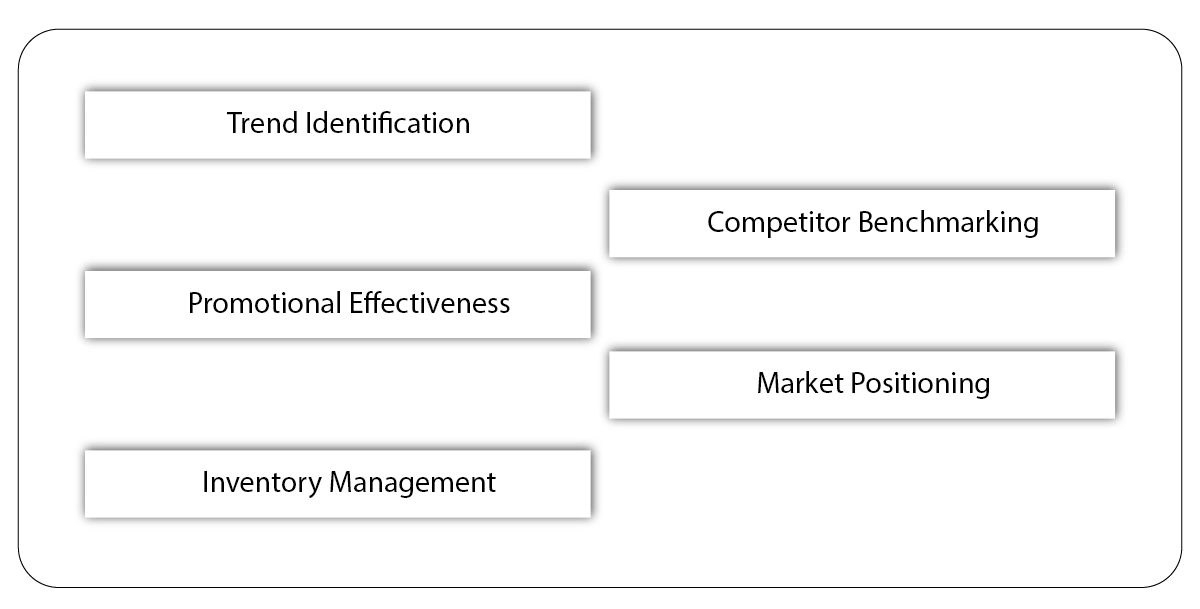
Once data is collected through web scraping, brands can employ various analytical
techniques to derive meaningful insights. Here are some ways brands can leverage scraped
data for pricing analysis:
- 1. Trend Identification: Brands can analyze historical pricing data to identify trends in
consumer behavior and price sensitivity. Understanding these trends can help inform
future pricing strategies.
- 2. Competitor Benchmarking: Brands can use scraped data to benchmark their prices
against competitors. This analysis enables businesses to make informed decisions
about pricing adjustments to remain competitive.
- 3. Promotional Effectiveness: Brands can evaluate the effectiveness of their pricing
strategies by examining data from discounts and promotional campaigns. Analyzing
sales data before and after promotions can provide insights into pricing's impact on
sales volumes.
- 4. Market Positioning: Pricing analysis through scraped data can help brands
understand their market position. This understanding allows businesses to refine
their marketing strategies and target the right audience with appropriate price
points.
- 5. Inventory Management: By linking pricing data with inventory levels, brands can
optimize stock levels and ensure they are competitively priced to sell through excess
inventory.
Challenges and Considerations
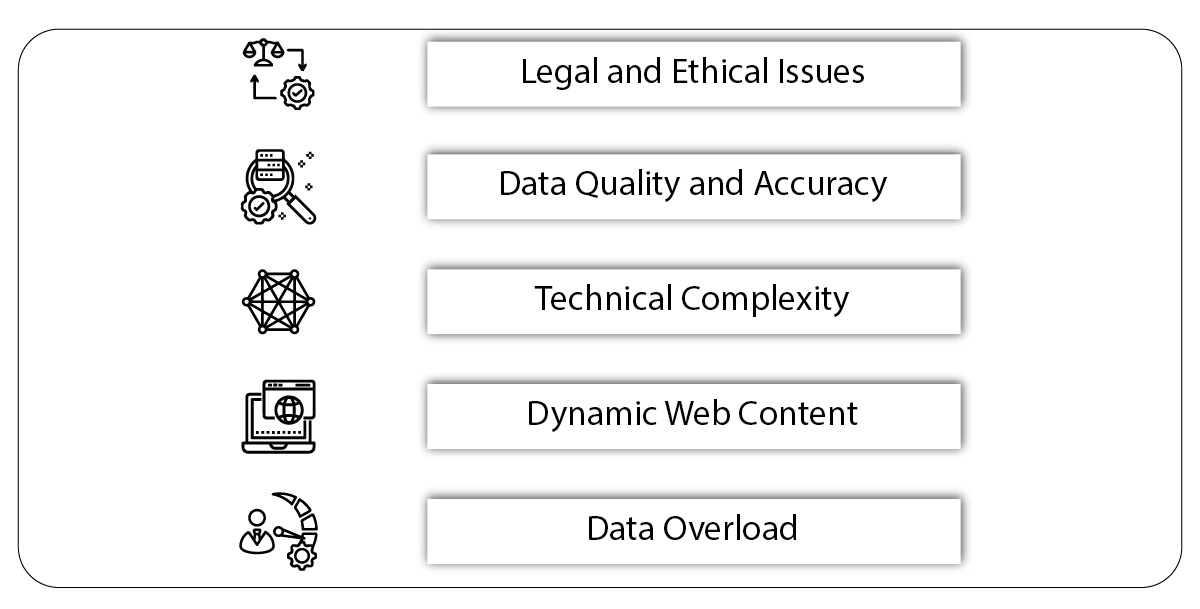
While web scraping offers significant advantages for pricing analysis, brands should be
aware of specific challenges and ethical considerations:
- 1. Legal and Ethical Issues: Some websites have service terms prohibiting scraping.
Brands must ensure they comply with legal regulations and respect the policies of
the platforms from which they are collecting data.
- 2. Data Quality and Accuracy: The accuracy of scraped data can vary depending on the
scraping method used. Brands should implement robust validation processes to
ensure data integrity.
- 3. Technical Complexity: Setting up and maintaining web scraping systems can require
technical expertise. Brands may need to invest in skilled personnel or third-party
services to manage their scraping operations effectively.
- 4. Dynamic Web Content: Many e-commerce sites utilize dynamic content,
complicating the scraping process. Brands may need to adapt their scraping
techniques to capture this data effectively.
- 5. Data Overload: With the vast amount of data that can be collected, brands may face
challenges in analyzing and interpreting the information. Implementing effective
data management practices is essential to derive actionable insights.
Conclusion
Web scraping has revolutionized how businesses approach pricing analysis in the e-
commerce sector. Platforms like Nykaa, Flipkart, and Myntra provide rich data sources that
can yield valuable insights into pricing dynamics, discounts, and brand positioning when
effectively scraped and analyzed. As e-commerce continues to grow, brands that harness
the power of web scraping for pricing analysis will be better equipped to navigate the
competitive landscape, optimize their pricing strategies, and ultimately enhance their
market performance. By understanding the nuances of pricing across categories and
leveraging real-time data, businesses can make informed decisions that drive profitability
and foster long-term success in the digital marketplace.
At Product Data Scrape, we strongly emphasize ethical practices across all our services, including
Competitor Price Monitoring and Mobile App Data Scraping. Our commitment to transparency and
integrity is at the heart of everything we do. With a global presence and a focus on personalized
solutions, we aim to exceed client expectations and drive success in data analytics. Our dedication to
ethical principles ensures that our operations are both responsible and effective.









